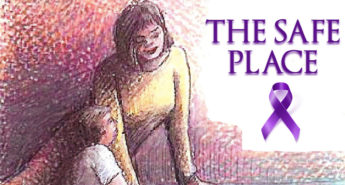 June is Post-Traumatic Stress Disorder Awareness Month. Post-Traumatic Stress Disorder, or PTSD, is a mental health disorder that can occur in individuals that have experienced a terrifying, traumatic, or dangerous event. Around 8 million adults in the U.S. are affected by PTSD in a given year. Here is the ‘Who, What, and When’ of PTSD in our nation.
June is Post-Traumatic Stress Disorder Awareness Month. Post-Traumatic Stress Disorder, or PTSD, is a mental health disorder that can occur in individuals that have experienced a terrifying, traumatic, or dangerous event. Around 8 million adults in the U.S. are affected by PTSD in a given year. Here is the ‘Who, What, and When’ of PTSD in our nation.
WHO is affected by PTSD?
It can potentially affect anyone who has experienced or witnessed a traumatic event. It may be war/combat, rape or other sexual assault, domestic violence, bullying, child abuse, a serious accident, death of a loved one, racial violence, a terrorist act, a natural disaster, a life threatening illness or injury, or any other deeply traumatic event. Repeated exposure to details of the trauma of others can also open the door to PTSD for some individuals. (Police officers, DHS case workers, etc.) We typically think of combat veterans when we think of PTSD but it can affect anyone that has been exposed to trauma. Of the different ethnic groups in the U.S., Latinos, African Americans, and Native Americans have higher rates of PTSD. Women are more likely to suffer from PTSD than men. At least 30% of Vietnam veterans will develop PTSD in their lifetime. It is estimated that as high as 49% of rape victims will struggle with PTSD. Those that are physically assaulted have a 31.9% chance of developing PTSD.
WHAT are the signs of PTSD?
PTSD is an ongoing reaction to trauma long after most people would have recovered naturally. Not only does the person relive the experience over and over, their bodies react and respond as if the person is currently re-experiencing the trauma.
To be diagnosed with PTSD, an individual must show signs of all four of the following symptoms for at least one month:
- Re-experiencing Symptoms:flashbacks, reliving the terrifying experience over and over, nightmares, overwhelming frightening thoughts.
- Avoidance Symptoms:Avoiding places, people, objects, events, thoughts, or anything that reminds them of the event.
- Reactive Symptoms:Easily startled, angry outbursts, struggles with sleeping, feeling tense or on edge. (Also called hyperarousal.)
- Negative Mental Symptoms:Fear, anxiety, shame, guilt, hopelessness, distrustful, numb, trouble remembering details of trauma.
WHEN can you get PTSD?
Anytime after a traumatic event. Symptoms usually begin within three months of the traumatic experience, but can begin years later. In those that fail to recover, the condition becomes chronic.
For help dealing with the trauma of domestic abuse call 1-888-554-2501, 24 hours a day, seven days per week. We offer a ‘safe place’ to escape the abuse, as well as resources, support groups, Orders of Protection, and help getting the resources you need to live a life free from abuse.
https://vistapineshealth.com/services/ptsd-treatment/facts-statistics/
https://www.atrainceu.com/content/3-ptsd-populations-risk
https://vertavahealth.com/mental-health/ptsd/facts/




Leave a Reply